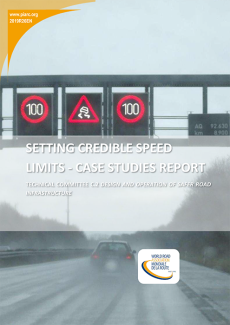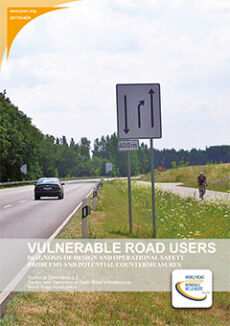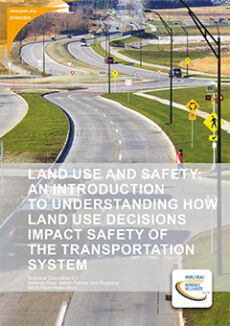Technical Reports Road safety
This page lists technical reports of PIARC in the field of road safety. These publications are classified chronologically.
-
Setting Credible Speed Limits - Case Studies Report

This report of case studies on the topic of speed limits includes a series of implemented countermeasures or experimental proofs of concept to help improve the road safety in a specific location or area. PIARC didn´t work on specific speed issues in the past periods, therefore this report also contains a short theoretical introduction concerning the role of speed in road safety and the importance to set speed limits that are credible for road users. Credible is in general an individual task and [...]
-
Security of Road Infrastructure - Technical Report

TF C.1 concentrated on "security of infrastructure, transported goods and persons". This decision was based on the experience that, despite the occurrence of incidents taking advantage of the layout and design of road infrastructure to target areas used by pedestrians in order to cause harm, some Road Administrations (hereafter referred to as RAs) are still reluctant to take responsibility for embedding security as business-as-usual in the way they design, construct, operate and maintain their infrastructure. [...]
-
Connected Vehicles - Challenges and Opportunities for Road Operators - Technical Report

The deployment of Vehicle-to-Infrastructure (V2I) and Vehicle-to-Vehicle (V2V) communication, also known as cooperative intelligent transport systems (C-ITS) is speeding up in many developed countries. For example, Japan has already an operational system at national level, the United States are considering a law mandating dedicated short-range communication in new cars, and the European Union has developed a strategy aiming at massive deployment from 2019. These technologies involve many opportunities [...]
-
Vulnerable road users: Diagnosis of design and operational safety problems and potential countermeasures

Following the World Health Organisation, nearly half of those dying on the world's roads are vulnerable road users (VRU). This proportion is much greater in low- and middle-income countries, because of the greater variety and intensity of traffic mix and the lack of separation from other road users, than in high-income countries. Compared to other road users the vulnerable user group is particularly exposed to injury as they are not protected by a vehicle shell. For years, pedestrians, cyclists, [...]
-
Land use and safety: an introduction to understanding how land use decisions impact safety of the transportation system

Unplanned communities create hazards for road users of all types generating unsafe conditions for motorists on the roadway and significant dangers for pedestrians, bicyclists and residents alongside or adjacent to the road. While the World Road Association continues to investigate options and recommendations for communities that already exist in these environments, Technical Committee 3.1 generates this report to explain the relationship between land use and transport planning and the need for determined, [...]